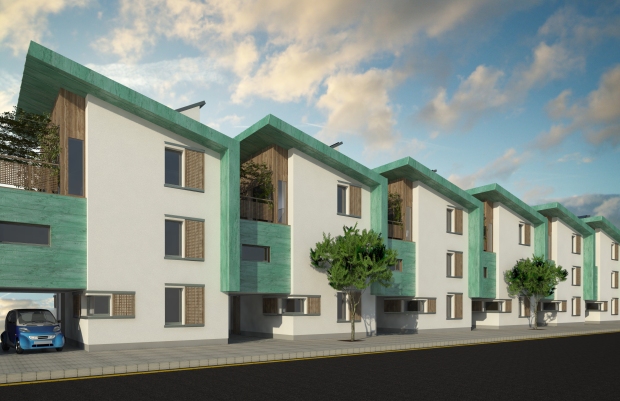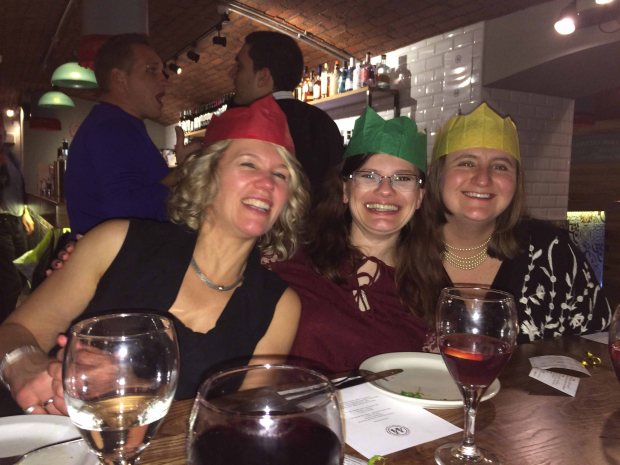In 2007, Gaunt Francis entered and won the Home for the Future competition with their design for the Green House. It won with over 22,000 votes not just because it was zero carbon rated, but precisely because of its elegant and homely design which was missing from so many other attempts at creating eco-housing.

Gaunt Francis Architects’ winning design for the Barratt Green House at BRE
Built by Barratt Homes at the Building Research Establishment (BRE), the Green House was the first zero carbon, Code Level 6 dwelling to be built by a volume house builder.
As we saw in our last blog post, the SOLCER House was the first carbon-positive house to ever be built. Parts of the house however, are still uninhabitable and though it was a successful experiment into carbon-positive structures, really, the Gaunt Francis design was the first realistic eco-house ever built in the UK, because of its aesthetic likeness to traditional housing. This house proves that in order to be ‘green’ or live a sustainable, renewable lifestyle, you don’t have to compromise on comfort, technology or style. Renewable and eco-friendly materials were used throughout the house, from low-emission paints and natural ink wallpapers, to natural organically certified materials like cotton, wool and silk for the carpets, mattresses and even the towels.
Through clever interior design, there is an astonishing level of recycled materials used in the Green House, for such an elegant, homely and stylish look. All wood used in the property is FSC certified and where possible, second-hand furniture has been ‘upcycled’ with high standard refurbishment, such as natural fabric upholstery. Not only this, but extensive use of recycled materials for decorative accessories, such as glass (in the chandeliers in the dining area), and plastics (using recycled yoghurt pots and milk cartons for media unit doors) helps the Green House to hit its renewable, carbon neutral targets.
The Green House has a number of cutting edge technical features which help it to achieve such high levels of compliance with the regulations for zero-carbon certification, as shown in the annotated section below. Some of these include triple glazed windows, solar panels, rooftop bio-diverse vegetation and a futuristic, interactive computer control panel which regulates the heating and cooling of the house to ensure maximum precision in energy management.

Some of the Green House’s eco-features.
The house is a 130m2 (1400 sq ft) three storey, three/four bedroom family home, including an open plan living, dining and kitchen space; downstairs cloakroom; games/play room; home office; family bathroom; and ensuite to the main bedroom of the three provided. All rooms are serviced from a central hallway, which starts from the front door and covered carport area and terminates at the second floor external terrace. The house was designed to be built as part of a row of terraced houses, which not only improves energy efficiency, but also so the house can be connected to a district electricity generating/heating system.

A proposed row of Green Houses. In terms of efficiency, the Green House performs best when built as part of a zero-carbon community.
The whole purpose of the Green House was to see if zero-carbon housing could ever be achieved a) by a volume housebuilder, and b) whilst still being an attractive and inviting home. SOLCER House is great, but it’s not very cosy. Green House was designed in line with the 2006 UK government’s target for all new homes to be zero-carbon rated by 2016, and the long-term target of an 80% reduction in carbon emissions from homes by 2050. However, in the summer of 2015, these targets were axed by the Conservative government (in a movement which was widely criticised by environmentalists, architects and housebuilders alike). This was despite David Cameron touring the BRE Innovation Park in 2010, spending time in the Green House itself, where he heard about the key principals that underpin the delivery of more sustainable homes. Following the tour, the Prime Minister said;
“Looking at the houses here today, it is clear that people’s energy bills can come down if homes are properly insulated and properly built.”
This knowledge however, had been apparently forgotten, as the chancellor stated that the decision for scrapping the targets was based on the efforts to make housing less expensive and create a more prosperous nation.
SOLCER House and the Green House however, had already proved that positive-carbon dwellings were within the accepted budget for social housing. In a BBC report, John O’Brien, the Principal Consultant at BRE, said that the chancellor’s decision was “flawed” because it absolutely did not cost more to build zero carbon homes, and in fact, they could even provide an income or reduced energy expenses for owners, which the Prime Minister had already stated himself (as above). As well as resulting in greatly reduced energy bills, homes which produce their own energy can actually glean income from energy contributions to the national grid, producing a highly efficient system UK-wide, not only in just new-build housing areas. Still, regardless of this, the target slashing went ahead.
Today, the Green House is still part of the BRE Innovation Park, where you can visit and take tours of the Green House along with other sustainable dwelling prototypes. It’s an educational park where you can learn about the design, materials and technologies which make carbon-neutral building possible. Unfortunately, it doesn’t look as though we’ll be living in houses like this on a large scale for some time. Nevertheless, the Green House remains proof that eco-housing works and with the 2050 target fast approaching, sustainable houses such as SOLCER and the Green House will soon be highly in demand, and not long after, become essential.






 Friday 18th December 2015 was the evening of the Gaunt Francis Christmas Party, and as if that wasn’t enough festive cheer, it was also National Christmas Jumper Day.
Friday 18th December 2015 was the evening of the Gaunt Francis Christmas Party, and as if that wasn’t enough festive cheer, it was also National Christmas Jumper Day.





